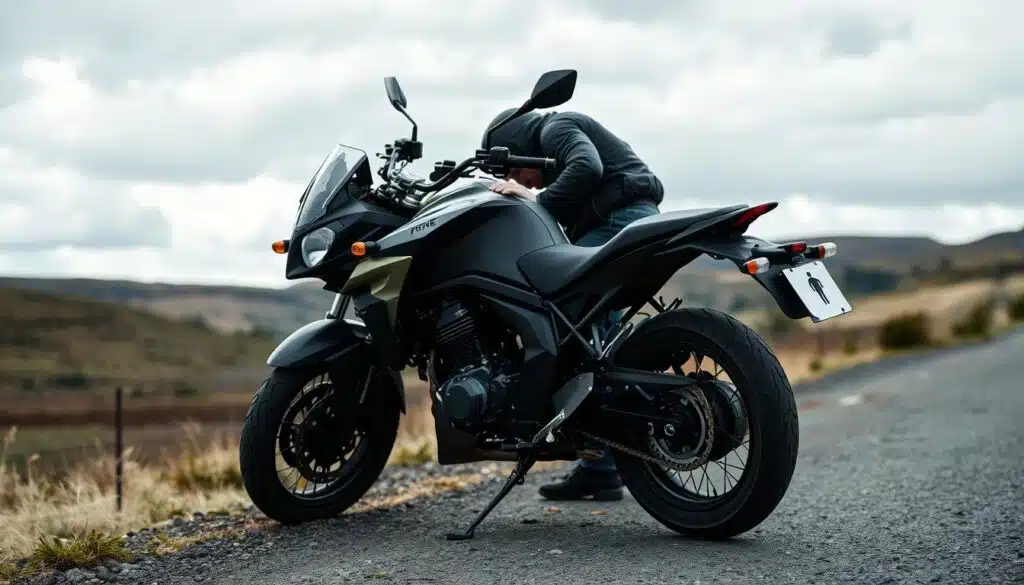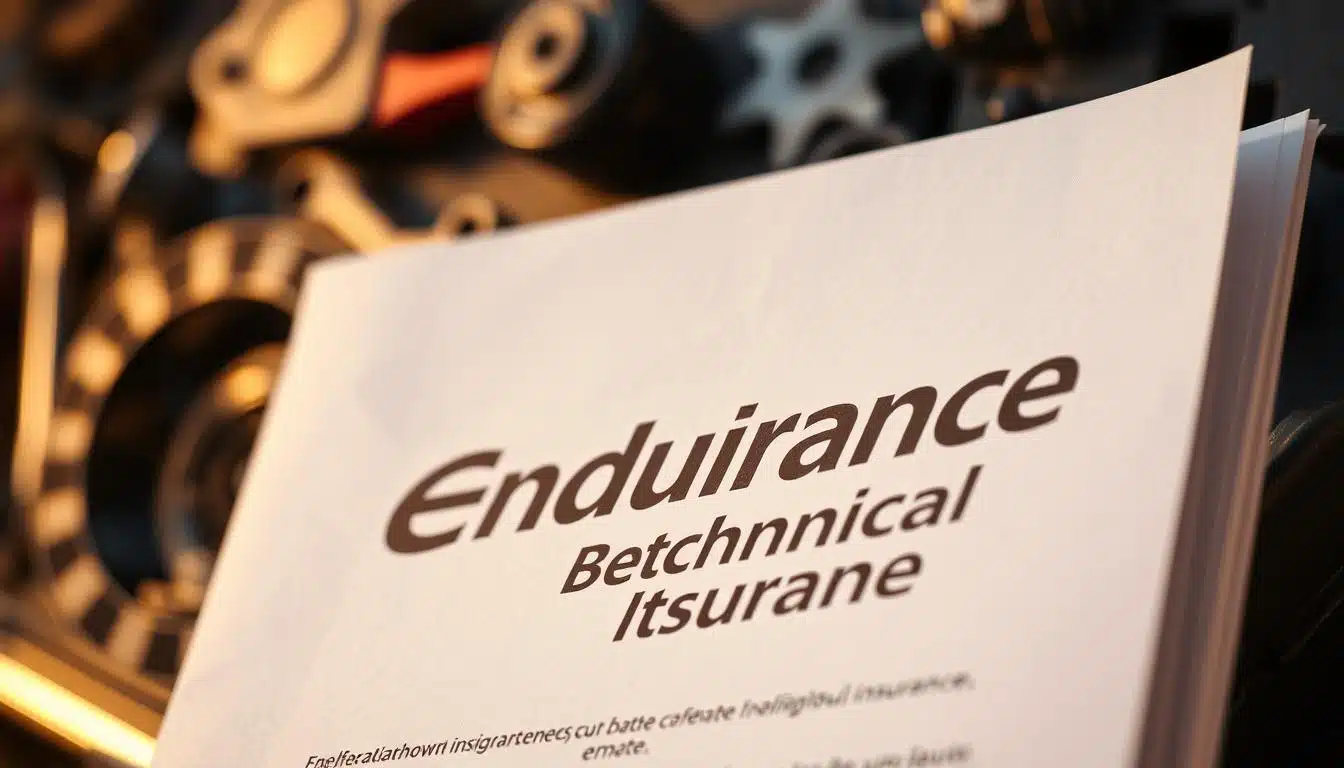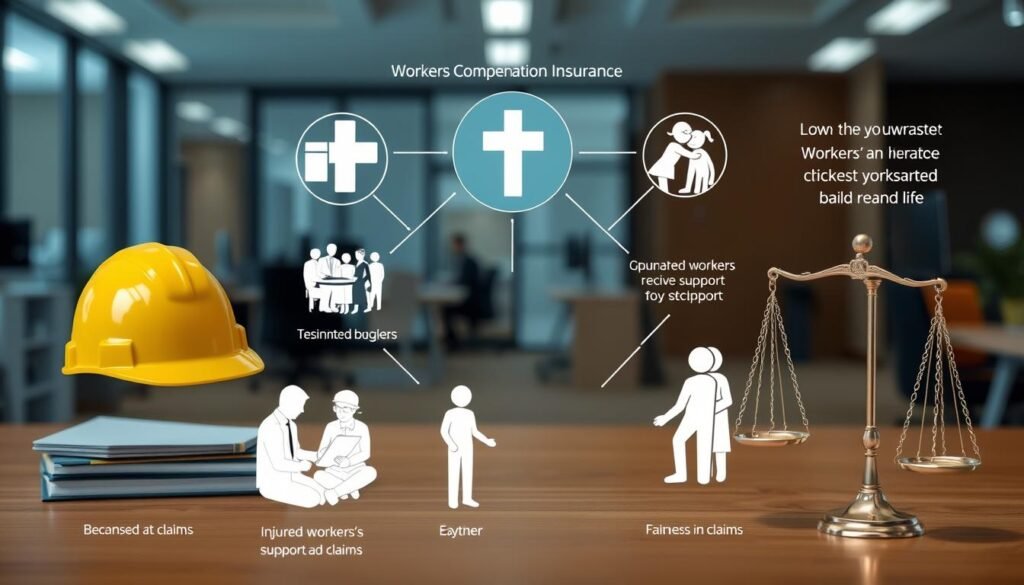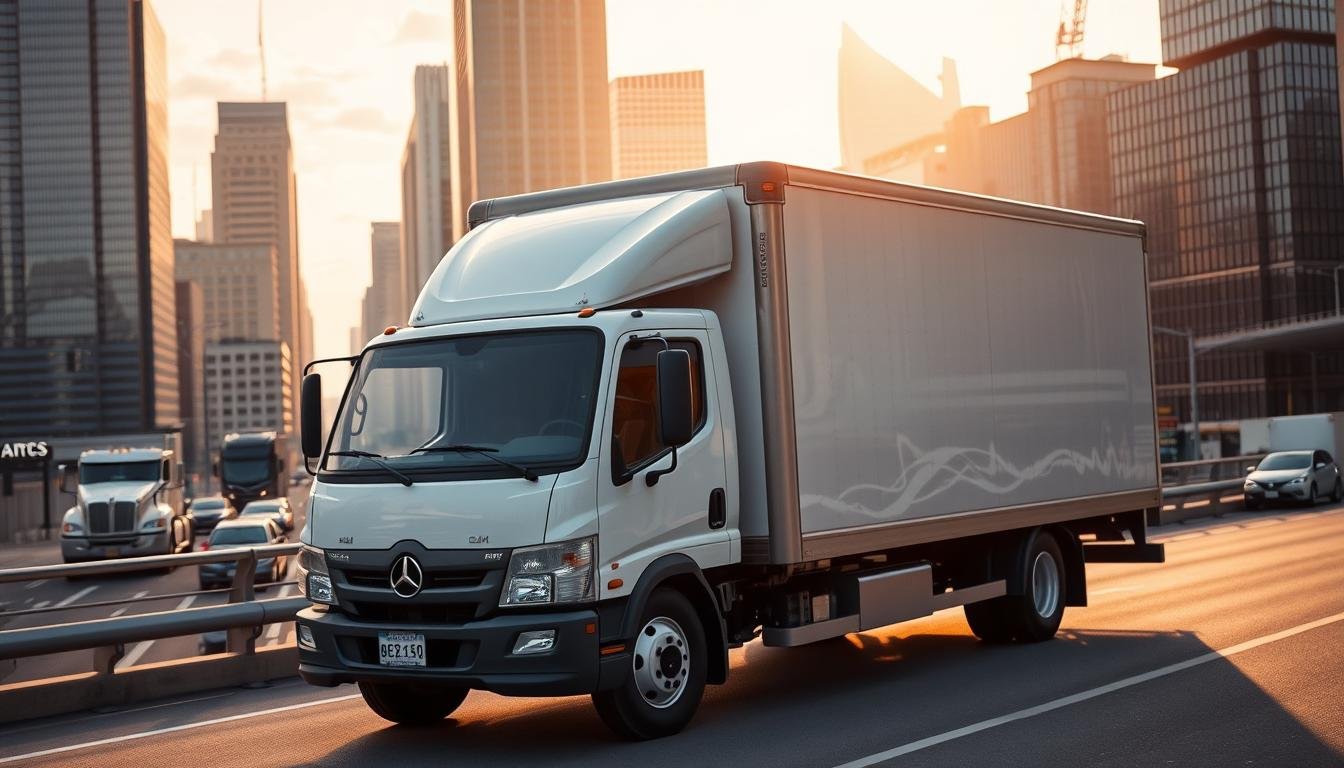Nothing is worse than a bike’s engine suddenly stopping on the road. A simple ride can turn into a stressful day with unexpected costs. This happens when a chain breaks, the battery dies, or a tire goes flat.
Motorcycle breakdown insurance is here to help. It’s like a safety net for riders. It gives peace of mind and ensures help is just a call away.
This guide uses research from Forbes Advisor and local insurers. It shows how breakdown insurance works with motorcycle insurance. You’ll learn about costs, top providers, and tips for saving money.
Table of Contents
ToggleKey Takeaways
- Motorcycle breakdown insurance makes emergencies easier to handle with towing and support.
- Top choices often come as add-ons to policies from companies like Progressive and Nationwide.
- Comparing costs and rankings helps find the best coverage for your money.
- When buying, compare limits, ask about discounts, and test response times.
- Choose providers with clear towing limits, included labor, and good complaint records.
What motorcycle breakdown insurance is and why riders need it
Motorcycle breakdown insurance helps when your bike breaks down but it’s not a crash. It offers services made just for motorcycles, not cars. This means less damage and quicker fixes.
Definition and how it differs from standard roadside assistance
Motorbike breakdown cover is made for bikes, not cars. It gives special help for non-crash breakdowns. Unlike car help, it uses special tools and trained techs for bikes.
Common breakdown scenarios for motorcycles
Engine or electrical problems can leave you stuck. Battery issues happen from long waits or extra accessories. Flat tires need special care, sometimes a patch or tow.
Fuel problems are common on long rides. Running out of gas gets you fuel or a tow. Touring riders face extra risks, needing help for far-off breakdowns.
Typical services included
Towing is safe and secure for your bike. Flat tire fixes include patching or towing if needed. Jump-starts help with electrical issues.
Fuel delivery helps you get to a station. Many plans also cover emergency stays if you can’t finish your trip. Check your policy for details on towing, labor, and gear protection.
| Service | Typical Included Benefit | Why it matters for riders |
|---|---|---|
| Towing with motorcycle-specific equipment | Secure transport to approved repair shop, often limited miles | Prevents damage from improper loading and protects custom parts |
| Flat tire repair | On-scene repair or tow if repair unsafe | Restores mobility quickly on single-track vehicles |
| Battery jump-start | On-site electrical assist or transport if battery fails | Avoids long waits and reduces chance of further electrical damage |
| Fuel delivery | Small fuel can to reach nearest station | Simple, low-cost fix that prevents unnecessary tow |
| Emergency accommodation and trip interruption | Hotel or travel reimbursement when repair delays exceed policy threshold | Essential for touring riders away from home |
Typical costs and factors that influence motorcycle breakdown insurance pricing
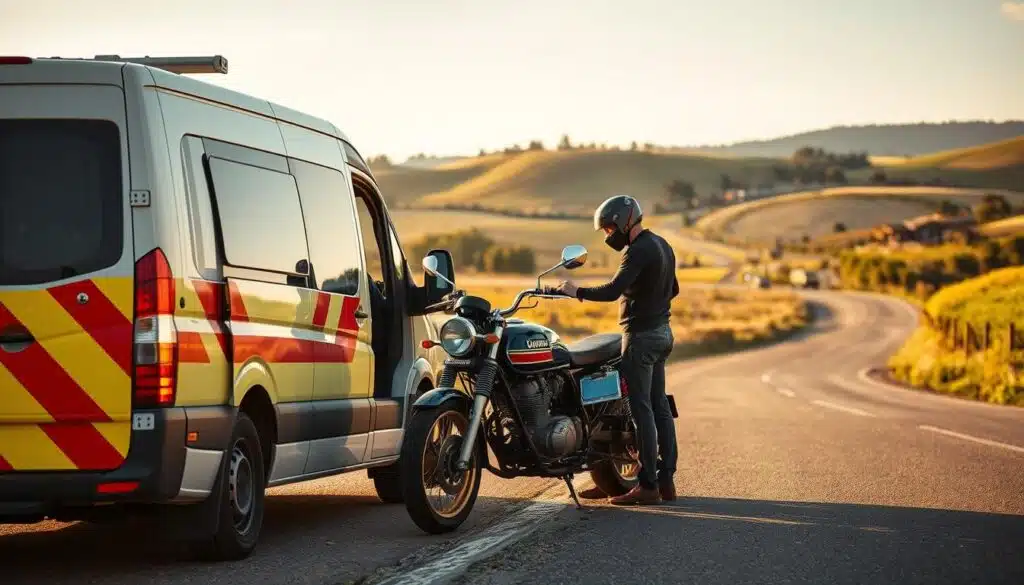
The cost of motorcycle breakdown insurance varies a lot. Plans that only cover breakdowns are cheaper than full insurance. For example, roadside add-ons cost between $5 and $20 a month. This depends on how far they’ll tow, how much labor they’ll do, and if they’ll provide emergency accommodation.
Full motorcycle insurance costs more. It can be around $200 a month for bikes that are worth a lot.
Several things affect how much you’ll pay. The type of bike you have matters. Bikes like Ducatis or Harleys cost more to tow and fix.
Where you live also plays a part. Places in the city are cheaper than rural areas. Your driving record and if you’ve taken a safety course can also lower your costs.
Be careful when choosing what you want. Options like long-distance towing or emergency accommodation cost more. But, choosing short-range towing or paying per call can save you money.
How much you have to pay out of pocket depends on your deductible. Most breakdown services charge per call or have a cap. But, deductibles are more common with full insurance.
Getting quotes online and using telematics can help you get better rates. Independent agents can also help you find the best deal by comparing different offers.
Asking about discounts for storing your bike in winter can also save you money. Look for discounts if you have other policies with companies like Progressive or GEICO.
Below is a table that shows the differences between breakdown-only plans and full motorcycle insurance. It helps you see where you can save money and when you might need to pay more.
| Plan type | Typical monthly price (US) | Common add-ons | Primary cost drivers |
|---|---|---|---|
| Breakdown-only / Roadside assistance | $5–$20 | Short towing range, battery service, fuel delivery | Towing distance limits, per-call fees, service network density |
| Premium breakdown plan | $15–$40 | Long-distance towing, emergency accommodation, trip interruption | Unlimited miles, long-route response, specialist towing for heavy bikes |
| Full motorcycle insurance (average benchmark) | $150–$300 | Liability, collision, comprehensives, uninsured motorist | Bike value, rider history, deductibles, state minimums |
| Bundled policies | Varies; often 10%–25% less overall | Roadside add-on included or discounted | Multi-policy discounts, insurer incentives, loyalty credits |
When you’re shopping, ask specific questions. Make sure you know about towing limits, call caps, and service fees. Compare different quotes to find the best coverage for your budget and needs.
Coverage details and what to look for in a policy
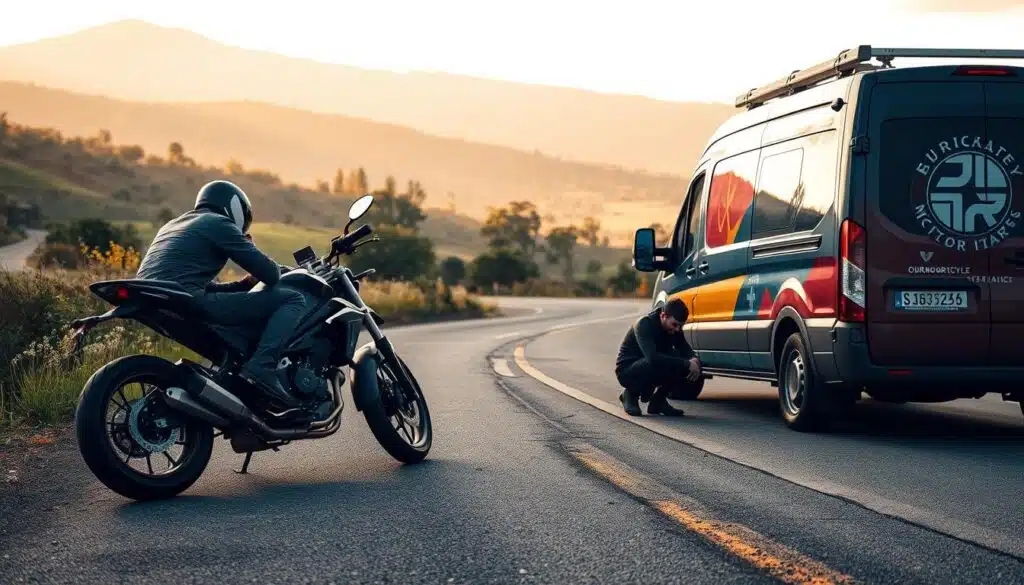
Choosing the right motorcycle breakdown service starts with clear expectations. Read the fine print for limits, exclusions, and response promises. Look for modern features like mobile app tracking, GPS dispatch, and online claims. These tech capabilities often mean faster help on the road.
Confirm if on-scene labor and minor repairs are included. Check if towing has a mile cap and if it takes the bike to a dealer, home, or repair shop.
Find out if a ride-home or recovery option exists. Some plans offer transport for the rider to a safe location when the bike must stay overnight. Other plans recover the bike to your address or an authorized shop.
Optional add-ons worth considering
Emergency accommodation is vital when breakdowns occur far from home. Trip interruption reimbursement covers meals and lodging when a breakdown happens more than 100 miles from your start point. Long-distance towing or cross-border coverage matters for touring riders who cross state lines or travel into Canada.
Compare how providers document and pay trip interruption. Some insurers require receipts and limit per-day amounts. Ask if loss-of-use or rental reimbursement pairs with bike recovery insurance to replace lost riding time during repairs.
Common exclusions and contract limits
Most plans exclude failures caused by poor maintenance, mechanical wear beyond emergency fixes, theft (handled by other policies), intentional misuse, off-road activities, or incidents while under influence. Confirm if roadside labor time has a cap per call and if a service fee or deductible applies.
Watch for annual claim limits and per-call mileage caps. Policies vary on the number of tows per year and maximum tow distance. Compare identical limits when quoting to ensure true coverage parity.
Practical checklist for comparisons
- Included on-scene labor minutes and what repairs qualify
- Per-incident towing miles and whether motorcycle towing coverage moves the bike to your shop
- Ride-home or recovery terms for rider and motorcycle
- Optional benefits: emergency accommodation, trip interruption, long-distance towing
- Exclusions: maintenance-related failures, off-road, theft, intoxication
- Per-call fees, deductibles, annual claim caps
Use the checklist to compare providers like Foremost, Progressive, or regional brokers. Verify that motorcycle roadside assistance and bike recovery insurance match your riding habits before you commit. Making these checks saves time and prevents surprise expenses when a breakdown happens.
Regional considerations and how coverage varies by state
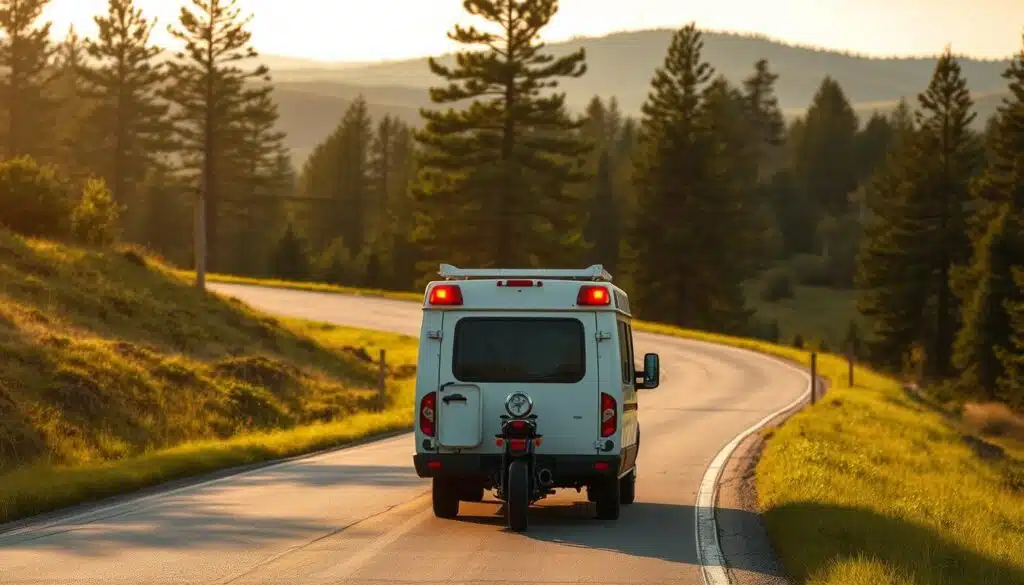
Insurance rules and where you live shape how riders buy and use motorcycle breakdown insurance. State laws on minimum liability, uninsured motorist rules, and no-fault systems change prices. Riders in states with high minimums often pay more for base premiums.
State rules and landscape affect availability and cost
States set baseline requirements that affect market behavior. When a state requires higher liability or personal injury protection, insurers adjust rates. This can make motorcycle breakdown insurance pricier in some states.
Insurers like Progressive and American Family have uneven footprints by state. This means riders in some areas find better emergency motorcycle breakdown cover options than others.
Urban versus rural response times and towing logistics for long-distance riders
Urban areas get faster service and more vendor choice. Tech platforms and towing fleets concentrate in cities, leading to shorter waits and lower fees. Rural, mountainous, or frontier areas face longer waits and higher fees.
Long-distance touring riders should check if the plan covers nationwide trips. Confirm partner density, average response times, and whether the plan covers cross-border trips. Add-ons for trip interruption and emergency accommodation help when a breakdown becomes an overnight problem far from home.
Examples of mandatory or common supplemental coverages by jurisdiction
Certain jurisdictions or carriers commonly bundle or require supplemental options. No-fault states often push personal injury protection limits. This can reduce the out-of-pocket impact after an accident but leave breakdown-related costs unaffected unless a policy includes recovery cover.
Canadian examples such as Newfoundland’s mandatory coverages highlight how regulation sets a baseline. U.S. riders should watch for state rules on uninsured motorist coverage and direct compensation frameworks. These rules change how supplemental emergency motorcycle breakdown cover interacts with liability and recovery claims.
Practical checklist for regional riders
- Check state minimum liability rules and whether they affect premium baselines.
- Ask insurers for network maps and typical rural response times.
- Confirm towing-mile limits, per-mile fees, and availability of emergency motorcycle breakdown cover across state lines.
- Consider adding trip interruption and emergency accommodation for long tours through multiple states.
Comparison of top insurers and motorcycle breakdown service providers
Choosing the right policy means looking at coverage, complaints, claims handling, discounts, and quote ease. Riders want to know about towing limits, parts reimbursement, and specialized towing. The table below shows these differences for easy comparison.
Forbes Advisor’s criteria help you judge a carrier. Look at complaints, coverage, repair service, discounts, and quote ease. Broker networks, like BrokerLink, can find local towing partners and offer savings.
| Provider | Noted Strength | Primary Weakness | Best Use Case |
|---|---|---|---|
| Foremost | Comprehensive motorcycle-focused options and add-ons | Limited availability in some states | Riders who want specialized features and deep motorcycle cover |
| American Family | Very low complaint ratios and strong customer service | Fewer nationwide towing partners in remote areas | Customers seeking low complaint history and reliable service |
| Erie | High satisfaction for collision claims and repair quality | Coverage options vary by region | Those prioritizing repair network and claim handling |
| Progressive | Targeted discounts for military families and easy online quotes | Complaint volumes above top-tier peers in some states | Military riders and digitally native shoppers |
| Nationwide | Innovations in safety gear coverage and add-on flexibility | Higher premiums for extensive towing ranges | Long-distance tourers who value gear protection |
| Allstate | Strong bundling discounts and user-friendly apps | Variability in local towing partner quality | Commuters who want discounts and app-driven service |
Editorial ratings show a mix of high marks for online tools and add-on breadth. But, complaint indices are a reality check. Check the National Association of Insurance Commissioners complaint index for state-level context before you commit.
Match the strengths above to the motorcycle breakdown service you need. If you want top motorcycle breakdown insurance focused on motorcycle-specific features, prioritize carriers with motorcycle-centric options. If you need the best motorcycle breakdown coverage for touring, look for wide towing ranges and emergency accommodation add-ons. Riders who value fast digital quotes should weigh ease-of-quote scores heavily.
Local brokers can uncover regional partners and bundling discounts that lift overall value. Use complaint metrics, collision repair ratings, and coverage checklists together to form a balanced decision.
Pros and cons of purchasing dedicated motorcycle breakdown insurance
Riders think about value and coverage when picking bike protection. Dedicated plans offer bike-focused services not found in general roadside add-ons. The right choice depends on the bike’s value, how often you ride, and your touring plans.
Benefits you gain with a dedicated plan
Specialist motorcycle roadside assistance brings fast, bike-smart technicians. They know how to load and transport bikes safely. This reduces damage risk during recovery.
Bike recovery insurance often covers rider gear and custom parts. Policies from insurers who work with Harley-Davidson and Triumph offer endorsements for aftermarket items and secure storage after a breakdown.
Long-distance touring riders find value in trip interruption and emergency accommodation options. App-based dispatch and tech-enabled tracking speed up response, improving outcomes on remote routes.
Drawbacks to consider before buying
Cost is a big factor. Dedicated motorcycle breakdown insurance is often pricier than a basic roadside add-on tied to an auto policy or an auto club membership.
Overlap can be a waste. Credit card benefits, rental contracts, or an existing auto club plan may offer services you’d buy with a separate motorcycle plan.
Network limits matter in rural states. Some providers lack specialized vendors in remote areas, reducing the advantage of tailored bike recovery insurance for riders who frequent backcountry roads.
Policy exclusions for maintenance-related failures or race-track use can leave gaps. Read contract language on covered causes and towing distance limits.
When a bundled rider policy makes more sense
Bundling motorcycle roadside assistance with a full rider policy often lowers premiums and simplifies claims. Insurers like Progressive and Erie may offer motorcycle-specific towing networks when you bundle, creating a cost-effective middle ground.
Choose bundling when savings and convenience matter more than specialty coverage. Pick a dedicated plan when you own a high-value bike, ride daily, or tour long distances. You’ll need tailored recovery, secure storage, and custom-parts endorsements.
Use an independent agent to compare deductibles, network scope, and response times. This helps find affordable motorcycle roadside assistance that fits your real riding habits without paying for redundant services.
Choosing the best plan for your riding lifestyle
Find a plan that fits your riding style. Whether you commute, ride on weekends, or tour long distances, different plans offer the right mix of cost and coverage. Use a checklist to compare benefits like towing range, labor, and emergency services before buying.
Daily commuters need fast help and short-distance services. Look for quick jump-starts, fuel delivery, and on-scene labor. Also, check if they offer ride-home or recovery options for when repairs take too long.
Recommended features for daily commuters
Short tow limits save money and time. Quick jump-starts and flat fixes are key. A ride-home benefit is useful when repairs take hours or days. Compare how often you call for help to see if the plan is worth it.
Options for weekend riders
Weekend riders can save with pay-per-use or lay-up discounts. Seasonal plans lower premiums when you’re not riding. Look for policies that offer temporary coverage for trips and club rides. Also, check if bundling with auto or home policies can save you money.
Plans best for long-distance touring
Tourers need wide towing ranges and a nationwide network. They also need coverage for lodging when a breakdown forces an overnight stay. Make sure the policy covers meals and hotels during trip interruptions. Tech features like route support and tracking can also be helpful.
Use this quick feature checklist to compare quotes against likely call frequency:
- Short rides: short-distance towing, fast battery service, ride-home benefit
- Weekend use: lay-up discount, seasonal or pay-per-use, temporary trip boosts
- Touring: extensive towing miles, emergency accommodation, trip interruption
| Rider Type | Must-have Features | Typical Cost Drivers |
|---|---|---|
| Daily Commuter | Short towing, quick jump-starts, fuel delivery, ride-home | High call frequency, urban response speed, loss of use option |
| Weekend Rider | Seasonal pricing, pay-per-use, lay-up discounts, temporary add-ons | Months stored, trip add-ons, bundling discounts |
| Long-Distance Tourer | Wide towing range, nationwide network, emergency accommodation, trip interruption | Towing miles, cross-state claims, international travel options |
Compare features and prices to find the best value. Choose a provider known for reliability. A plan that matches your riding style protects your time and budget without wasting money on unused benefits.
motorcycle breakdown insurance
Choosing the right policy means comparing real service details, not just price. Riders need to know what a plan offers on the road. This includes everything from immediate battery assists to long-haul recovery. Use the checklist below to judge any motorcycle breakdown service before you sign.
How to evaluate a policy using LSI terms
First, check if the provider sells motorcycle roadside assistance as a standalone product or as an add-on. Make sure to verify bike recovery insurance limits for full transport versus flatbed-only moves. Also, check motorcycle towing coverage details: per-incident miles, on-scene labor windows, and partner tow density in your state.
Practical checklist to compare quotes
- Identical policy limits across quotes to compare apples to apples.
- Deductible amounts for towing and related claims.
- Response-time guarantees and average dispatch times in your ZIP code.
- Towing miles per incident and annual claim caps.
- Included on-scene labor minutes for tire or battery service.
- Emergency accommodation and trip interruption thresholds.
- Coverage for aftermarket parts, custom luggage, and specialty gear.
- Dispute resolution process and complaint metrics from state regulators.
Money-saving tips backed by industry analysis
Raise deductibles on collision or comp to lower premiums. Ask insurers about lay-up discounts if you store the bike in winter. Complete a recognized motorcycle safety course to qualify for rate credits.
Bundle motorcycle breakdown insurance with home or auto to unlock multi-policy discounts. Use an independent agent to gather multiple carrier quotes quickly. Confirm whether existing memberships duplicate services. Seek carriers with strong digital tools for faster dispatch and reduced downtime.
| Evaluation Item | What to Check | Why It Matters |
|---|---|---|
| Policy Limits | Same liability and service caps on all quotes | Ensures fair price comparison and prevents surprise shortfalls |
| Deductible Structure | Per-incident and per-year deductibles listed | Affects out-of-pocket costs at time of service |
| Response Time | Guaranteed minutes and average regional dispatch | Fast response reduces roadside risk and time off the road |
| Towing Miles | Included miles per incident and long-distance options | Defines usefulness for touring riders versus city commuters |
| On-Scene Labor | Minutes covered for repairs, battery jump, flat fix | May save a tow when minor fixes get you riding again |
| Trip Interruption | Per-day and total caps for lodging and transport | Protects against costly hotel or transport bills during breakdowns |
| Exclusions & Caps | Clear list of excluded causes and per-incident limits | Prevents surprise denials and out-of-pocket gaps |
| Provider Network | Towing partner density and coverage map | Higher density improves odds of swift bike recovery insurance service |
Conclusion
Choosing the right motorcycle breakdown insurance is key. Start by making a list of what you need to ride. Look at quotes from insurers like Foremost and Progressive. Also, compare options from American Family and Erie.
Check the towing miles, how fast they respond, and if they cover trip interruptions. Make sure they offer emergency accommodation for long rides.
Cost is important. Use independent agents and bundle policies to save money. Look for discounts for safety courses. This can lower your premiums compared to the average policy.
Consider higher deductibles or a roadside add-on if you’re on a tight budget. But make sure the coverage you choose fits your needs.
Think about the rules in your state and the reliability of providers. State laws can change what you need to cover. Check the NAIC complaint index and your state’s insurance records before buying.
Use digital tools and apps to make filing claims easier. This can help you track tow status and improve your riding experience.
Here’s what to do next: get three quotes, including one from a specialist. Ask about discounts for bundling and laying up your bike. Check the towing network and complaint history.
Store your policy details and app info on your phone. These steps will help you find the best coverage and support when you need it.
Motorcycle Breakdown Insurance — Frequently Asked Questions
What common scenarios does motorcycle breakdown insurance cover?
Typical scenarios include mechanical failure (engine/gearbox), flat tyres, dead battery, running out of fuel, ignition/key problems, and some electrical faults. Many plans also respond to accidents if the bike is inoperable and to situations where a rider is stranded away from home.
What typical services come with a motorcycle breakdown policy?
Core services are emergency roadside repair (on-scene attempt), towing to a nominated repairer or home, recovery to your address, onward travel (replacement vehicle, taxi, or public transport), and sometimes overnight accommodation or collection of the repaired bike. Some policies include nationwide helplines and tracking of service vehicles.
How much does motorcycle breakdown insurance cost compared with full motorcycle insurance?
Breakdown cover is much cheaper than full motorcycle insurance because it only covers assistance services, not third-party liability or comprehensive loss. Expect breakdown cover to be a small add-on or standalone annual fee (often low double-digits to low triple-digits depending on region and level). Full insurance (liability, theft, damage) is significantly more expensive.
What factors most influence the price of motorcycle breakdown coverage?
Price drivers include the level of cover (roadside only vs. home start vs. European), response radius and guaranteed arrival times, the rider’s postcode (rural vs urban), chosen limits (towing distance), number of callouts allowed, added benefits (onward travel, accommodation), and whether you buy it bundled with other policies.
How do deductibles, bundling and discounts affect out-of-pocket costs?
Some providers have callout fees or per-incident service fees (effectively a deductible) — choosing a higher per-call fee lowers your premium. Bundling breakdown cover with motorcycle or home insurance often yields discounts. Membership-based providers (clubs) may offer multi-year or loyalty discounts.
What standard coverage elements should I verify in a policy?
Check the definition of a breakdown, included services (roadside repair, towing, home start, onward travel), mileage/towing distance caps, number of callouts per year, geographic limits (national/European), response-time guarantees, exclusions (e.g., fuel contamination), and any per-incident fees.
What optional add-ons are most valuable for riders?
Valuable add-ons often include European cover for touring, extended towing distance, spare-part delivery, trip interruption or accommodation costs, legal expenses, and cover for pillion passengers. For commuters, guaranteed arrival times or priority response can be useful.
What common exclusions and limits appear in breakdown service contracts?
Common exclusions: pre-existing mechanical problems known before purchase, failures due to lack of maintenance, accidents covered by motor insurance instead of breakdown policy, off-road use, illegal modifications, and commercial use. Limits can include towing distance, callout count, and geographic boundaries.
How does state or regional regulation affect motorcycle breakdown insurance?
Regulation may affect product labeling, solvency requirements for providers, cancellation/refund rules, and consumer disclosures. In some places, roadside assistance providers must meet licensing standards. Check local consumer-protection rules and whether the provider is regulated or operates as a membership club.
Should I worry about provider availability in rural or cross-state touring scenarios?
Yes — response times and network density vary. In rural areas you may face longer waits or limited on-scene repair capability. For cross-state or long-distance touring, pick providers with national coverage or verified European/neighboring-country cover and confirm response commitments in those regions.
Which insurers rank highest for motorcycle coverage and breakdown services?
Top providers differ by country, but the best-ranked tend to combine wide service networks, transparent terms, fast response, and strong customer reviews. Look for established roadside brands, insurers that bundle assistance, and specialist motorcycle clubs with dedicated bike technicians.
What are the strengths and weaknesses I should expect from top providers?
Strengths: quick nationwide coverage, 24/7 helplines, options for European travel, and robust online claim tracking. Weaknesses: higher price for premium features, potential exclusions for custom bikes, and variable rural response times. Specialist motorcycle providers may offer better bike-specific repairs but smaller geographic reach.
Is dedicated motorcycle breakdown insurance worth it compared with a basic roadside add-on?
If you ride often, tour long distances, or own an older or customized bike, dedicated motorcycle breakdown cover is often worth it because technicians understand bikes and parts. Casual urban riders may be fine with a cheaper roadside add-on. Evaluate frequency of use and the bike’s reliability.
What features should daily commuters prioritize?
Daily riders should prioritize fast response times, home start cover (if breakdowns occur at or near home), unlimited or generous callout allowances, and local network strength. Onward travel options (loan bike, taxi reimbursement) minimize disruption to work.
What plan features matter for weekend riders or seasonal owners?
Weekend riders may want flexible short-term cover, seasonal pause options, and recovery to a repairer rather than immediate onward travel. For seasonal storage, check whether breakdown cover is suspended and how to reinstate it before the season.
What should long-distance touring riders require from a plan?
Tourers need wide geographic cover (national + cross-border/European), spare-part delivery or specialist towing, trip interruption and accommodation benefits, and guaranteed assistance hours. Confirm help for remote locations and large towing distance allowances.
How do I compare quotes effectively using a practical checklist?
Checklist: services included, exclusions, tow distance and callout limits, number of callouts/year, geographic limits, response-time targets, per-incident fees, add-ons and costs, provider reviews/ratings, and cancellation/refund terms. Compare at least 3 providers side-by-side using this matrix.
What money-saving strategies work best according to industry research?
Strategies: bundle assistance with other insurance for discounts, choose a sensible per-call contribution, limit features you don’t need (e.g., European cover if you never travel), and compare club membership versus retail policies. Also maintain your bike to reduce callouts caused by neglect.
How can I verify a provider’s complaint history and service quality?
Check consumer-review sites, industry watchdogs, Better Business Bureau/consumer protection databases, and any regulator complaint records. Look for patterns in response time, dispute outcomes, and claim denials rather than isolated negative reviews.
What immediate steps should I take before my next ride regarding breakdown coverage?
Actions to take: confirm your policy is active and you have the provider’s emergency number saved, review what to do in an incident (safety, call the helpline), check your tow/coverage limits, charge any onboard emergency kit (pump, inflator, basic tools), and carry proof of cover (app, card, or policy number).

